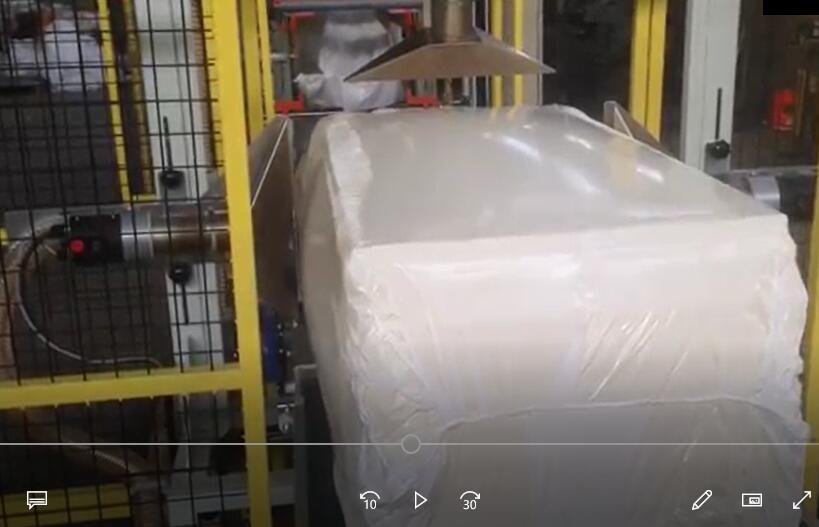
Optimizing Panel Packaging: A Guide to Automated Bagging and Wrapping Systems
Introduction to Panel Packaging Automation
In modern fabrication and manufacturing, efficiently packaging large, flat products like panels (wood, metal, insulation, composites) is crucial for protection during handling, storage, and transport. Automated panel packaging systems, including bagging and shrink-wrapping machines, provide streamlined solutions that enhance product integrity, increase throughput, and reduce labor costs compared to manual methods. Understanding the different types of equipment available, particularly those involving bagging with or without subsequent sealing or shrinking, is key to selecting the right system for your operational needs.

What are Automated Panel Packaging Systems?
Automated panel packaging systems encompass machinery designed specifically to enclose panels or stacks of panels in protective materials, typically polyethylene (PE) film. These systems range from relatively simple bagging units to more complex lines incorporating sealing and shrink-wrapping capabilities. They are engineered to handle the unique dimensions and weights of panel products commonly found in industries like building materials, furniture manufacturing, and metal fabrication.
Core Technologies: Bagging vs. Shrink Wrapping for Panels
While the original post discussed bagging machines "with and without sealers," in the context of panel packaging, the distinction often lies between simple bagging and more comprehensive shrink wrapping, which inherently involves sealing.
Panel Bagging Systems
- Function: These systems typically create a bag around the panel or stack using PE film dispensed from a roll. The film is often folded and cut to size.
- Sealing: Simpler systems might leave the ends open or apply a rudimentary seal (e.g., a tape closure or basic heat tack). They prioritize basic protection against dust and scratches over airtight sealing.
- Applications: Suitable for panels requiring minimal protection, short-term storage, or where breathability is desired. Often used for work-in-progress or internal transfers.
Panel Shrink Wrapping Systems
- Function: These systems also enclose the panel in film but include a sealing mechanism (often using L-bar sealers or side sealers) to create a fully enclosed bag. Subsequently, the packaged panel passes through a heat tunnel.
- Sealing & Shrinking: The heat causes the specially formulated shrink film to contract tightly around the panel, creating a secure, often weatherproof, and tamper-evident package. The seal quality is critical for the integrity of the final wrap. More information on the process can be found in our overview of shrinking machines.
- Applications: Ideal for panels needing higher protection levels against moisture, dirt, and handling damage during shipping and long-term storage. Provides load stability for stacked panels.

panel shrink packing machine3、 Key Considerations When Selecting Panel Packaging Equipment
Choosing the right automated system requires evaluating several factors specific to panel products:
1. Panel Dimensions and Weight
- Ensure the machine can accommodate the maximum length, width, height, and weight of your panels or stacks. Consider adjustment capabilities for varying product sizes.
2. Required Level of Protection
- Assess the necessary protection against environmental factors (moisture, UV), handling risks (scratches, impacts), and storage duration. This dictates whether simple bagging or full shrink wrapping is necessary.
3. Surface Sensitivity
- For panels with delicate surfaces (e.g., pre-finished wood, coated metal), the film type and wrapping tension must prevent damage. Some systems offer features to minimize friction.
4. Throughput Requirements
- Match the machine's speed (panels per minute/hour) to your production output. Consider cycle time, including feeding, wrapping, sealing (if applicable), and shrinking (if applicable).
5. Film Type and Consumption
- Evaluate the types and thicknesses of film the machine can handle (e.g., standard PE, shrink PE). Consider film usage efficiency and cost per package.
6. Integration and Footprint
- Determine how the system will integrate with existing production lines (e.g., conveyors) and the available floor space in your facility.
Benefits of Automated Panel Packaging
Implementing automated bagging or shrink-wrapping systems offers significant advantages:
- Enhanced Product Protection: Consistent wrapping shields panels from environmental damage and handling stresses. Shrink wrapping adds rigidity and tamper evidence.
- Increased Efficiency: Automation significantly speeds up the packaging process compared to manual methods, boosting overall productivity.
- Reduced Labor Costs: Frees up personnel from manual packaging tasks, allowing them to focus on higher-value activities.
- Improved Package Consistency: Automated systems deliver uniform, professional-looking packages every time, enhancing brand perception.
- Material Savings: Optimized film usage can reduce material waste compared to inconsistent manual wrapping.
Advancements in Panel Packaging Technology
The field continues to evolve, with trends focused on:
- Improved Energy Efficiency: Modern shrink tunnels utilize better insulation and airflow management to reduce energy consumption.
- Advanced Film Formulations: Development of thinner yet stronger films, including options with recycled content, addresses sustainability goals.
- Greater Automation & Integration: Increased use of sensors, PLCs, and robotics for fully integrated, hands-off packaging lines.
- Versatility: Machines capable of handling a wider range of panel sizes and types with minimal changeover time.
Conclusion: Investing in Efficient Panel Protection
Automated panel packaging systems, whether focused on simple bagging or comprehensive shrink wrapping, are valuable assets for manufacturers dealing with large, flat products. By carefully evaluating product requirements, protection needs, throughput demands, and budget, businesses can select a system that safeguards products, streamlines operations, and contributes to a more efficient production flow. The transition from manual to automated panel packaging often yields a rapid return on investment through increased productivity, reduced costs, and improved product quality upon delivery.
